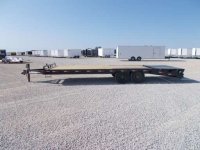BrokeFarmerJohn
Veteran Member
- Joined
- Oct 7, 2016
- Messages
- 2,233
- Location
- Columbus Ohio
- Tractor
- 2017 Mahindra 5555, John Blue G-1000, Massey Ferguson 98, John Deere GP
I have been looking at deck over trailers pretty heavily last few weeks (window shopping).
The trailer I would be interested in would be a bumper pull. All the deck overs have the axles so far back that it seems loading them without having a crazy amount of tongue weight, most loads would have to go on backwards?
I have had a 20ft deck over in the past, it’s axles weren’t as far back and I still backed quite a bit of the loads on backwards. Doesn’t seem to be as much of an issue with equipment trailers since axles are placed further forward.
Here’s an example, my Mahindra 5555 (80in wide, 15ft long with loader) is 7999lbs right now. The bush hog is 1025lbs but it’s 10ft long and 7ft wide. On a 25ft trailer I would have to back the tractor and bush hog on the trailer to get most of the load on the axles and not on the tongue? Not picturing a good way to balance the load with bumper pull. How much tongue weight do these trailers put on the truck?
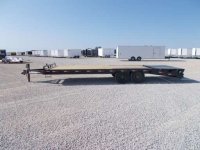
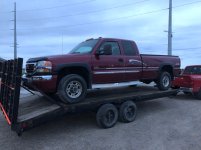
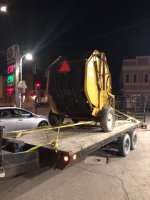
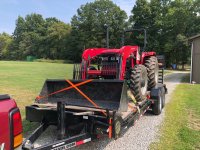
I have read a few threads on here about this issue but non have answered my questions.
The trailer I would be interested in would be a bumper pull. All the deck overs have the axles so far back that it seems loading them without having a crazy amount of tongue weight, most loads would have to go on backwards?
I have had a 20ft deck over in the past, it’s axles weren’t as far back and I still backed quite a bit of the loads on backwards. Doesn’t seem to be as much of an issue with equipment trailers since axles are placed further forward.
Here’s an example, my Mahindra 5555 (80in wide, 15ft long with loader) is 7999lbs right now. The bush hog is 1025lbs but it’s 10ft long and 7ft wide. On a 25ft trailer I would have to back the tractor and bush hog on the trailer to get most of the load on the axles and not on the tongue? Not picturing a good way to balance the load with bumper pull. How much tongue weight do these trailers put on the truck?




I have read a few threads on here about this issue but non have answered my questions.

